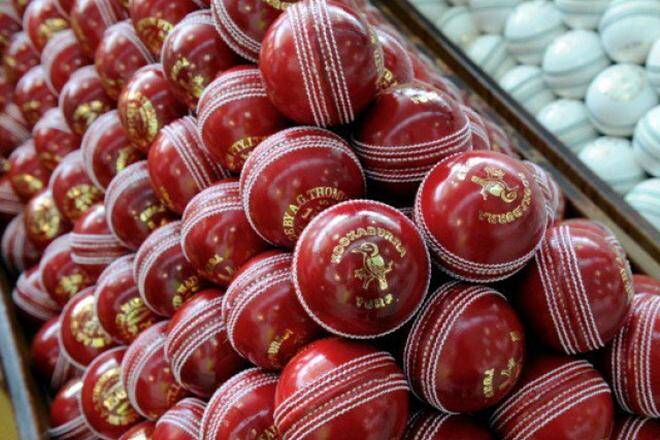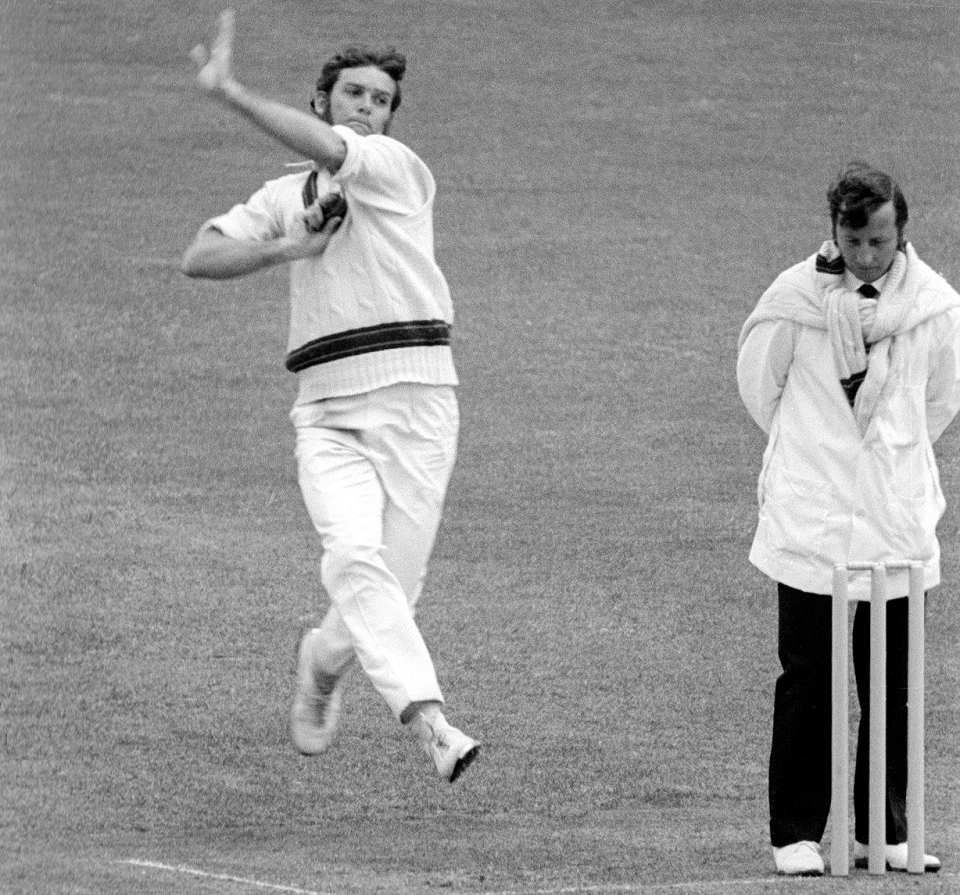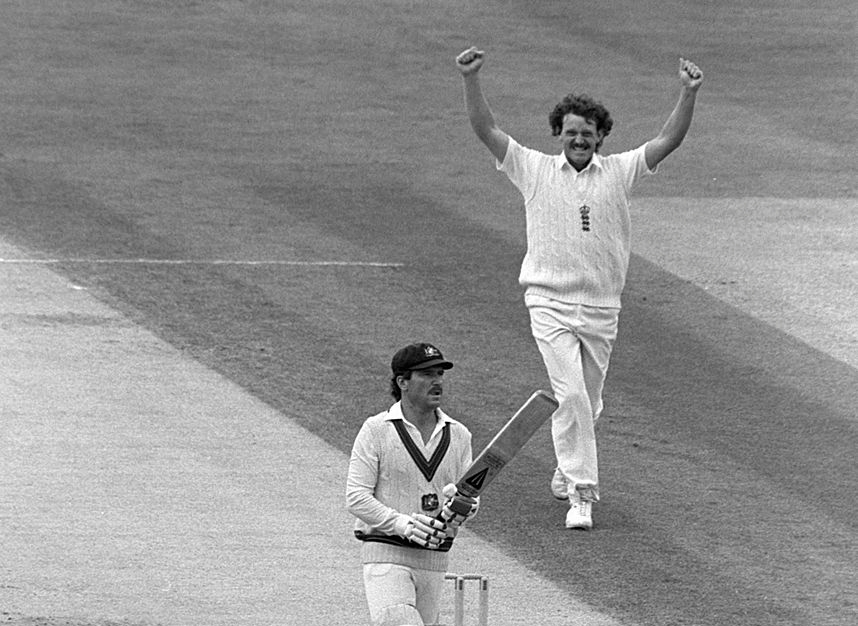Cricket is an unpredictable game, especially when you’re a swing bowler
Max Bonnell | May 26, 2023

I spent something over twenty years struggling to make the ball curl in the air. It was just about the only thing in cricket I could do. I found out pretty early on that I couldn’t bowl fast enough to bother anyone with pace, but I could learn how to move the ball sideways, so I worked on that. It was work, too – I spent lots endless time in the nets experimenting with different ways to make the ball change direction over 22 yards, so much so that I remember one frustrated batsman in the nets shouting at me, “can’t you bowl just one that just goes straight?”
These experiments never took me much beyond “conventional” swing. I never got the hang of reverse swing, because to make that happen, ideally, you need a very fast arm (and a slightly slingy action helps, too). My arm was distinctly medium-paced. So if I wanted the ball to curve, it had to be done the traditional way.
But here’s the problem with swing bowling: no one understands it. Oh, we say we do – shiny side, rough side, seam position, wrist position, all of that. Certainly, there are things you can do to maximise your chances of persuading the ball to swing. And, if it is swinging, there are things you can do that help you to control the amount of swing, and how late the swing happens. But what no-one knows is why it is that you can do all those things perfectly well two days in a row, and one day the ball swings like a banana and the next day it’s gun-barrel straight. Scientists have tested cricket balls in wind tunnels and not emerged any the wiser.
There are theories, of course. Cloud cover is a popular one. It’s said that a “heavy”, overcast atmosphere helps the ball to swing. Does it, though? It never seemed to me to make all that much difference. I suspect this theory took hold because the ball is said to swing consistently in England, where the skies are often oppressive and grey. But, of course, the balls usually used in England have very high seams, and that probably has a bit to do with it, too. Naturally, there are also many theories about the impact of variations between different balls, including the strange one that darker balls swing more. The truth is, we are all guessing. Which is why Bob Massie took 16 wickets in his first Test, swinging it round corners, and only 15 in his five other appearances. It’s why Richard Ellison, hooping it around, demolished Australia in two Tests running in 1985, in an otherwise anonymous international career. It’s not a repeatable formula.

Bob Massie for Australian in 1972
Nor is true that the ball swings more in England. I had three stints in England, including a full season in the Birmingham League in 1985. My experience was that there were more days in England than in Australia when the ball didn’t deviate in the air one iota. On the other hand, some days when it did go, it moved more than you could ever dream of swinging it in Australia.
Like this day at Kidderminster, 1985. I was playing for Stourbridge, a middle-of-the-table club in a strong league, that didn’t win a lot (until the next season, when Simon O’Donnell played for them and they won everything, including the National Knockout at Lord’s). We were meant to have a handy all-rounder playing for us, but Phil De Freitas was called up by Leicestershire after the second game and we never saw him again. Our home ground had a confusingly large collection of names, one of which was Amblecote, and Worcestershire played there occasionally – the ground was in the record books because Kent set a first-class record for a last wicket partnership there back in 1905, or thereabouts. We had a rough idea what that must have been like, because 1905 was also the last year the change rooms were painted.
Anyway, we went to play at Kidderminster. The Chester Road North Ground. Unusually for an English club ground, it’s huge. It actually has two cricket fields side by side, and the boundaries are roped off, not fenced. On one side of the ground is Chester Road North, on another a railway line that leads, I suppose, to Birmingham, and on another there’s an odd cluster of little streets named after English authors – Shakespeare, Marlowe, Hardy. It has one of those quaint, mock-Tudor pavilions. Worcestershire plays here sometimes, and one of their staff is the star Kidderminster batsman, a kid from Zimbabwe who’s six foot four and hits meaty drives with a hefty Duncan Fearnley bat.
There’s a big crowd in. That takes some explaining. It has nothing much to do with cricket. We’re in England in 1985, so the pubs open at mid-day but have to close at 2pm for four hours. If you want a drink in the afternoon, you need to find a licensed club, and the bar at the cricket club happens to be one of those. This is how the Birmingham League clubs are funded: every week we play in front of six cricket-lovers, three bored wives and several hundred alcoholics.

Richard Ellison for England in 1985
We bowled first. The pitch wasn’t greener than usual, the ball was no darker than normal and it wasn’t all that cloudy. And the ball swung everywhere. I’d like to claim the credit for this but, really, it did the same for every bowler who held the seam even slightly upright. The only skill involved was in trying to reduce the amount of swing, which meant bowling with a very high arm, and hitting a slightly shorter length. It took me a few overs to figure this out, and then the batsmen started falling. One opener was bowled: his left-handed partner was lbw, not offering a shot to a ball that he expected to pass some way outside off stump. The Zimbabwean kid came in. Big, imposing, confident. My first ball to him was only fractionally fuller than it should have been, and he pulverised it with a perfect cover drive. It would have made a hole in the fence, if there had been a fence. Instead, some unlucky fieldsman had to trot miles past the boundary rope to search for the ball.
Now, in years to come, better bowlers than me would learn that the way to bowl to this guy was to force him onto the back foot. But I didn’t have the pace for that, and besides, did I mention the ball was swinging? So I bowled the same ball, and he played the same shot, only this time my arm was a touch lower and the ball swung a tiny bit more, perhaps too soon, from the hand, but he committed early to the shot, only this time his foot wasn’t quite there and he nicked an easy catch to the keeper.
A couple of overs later I hit the stumps again. Kidderminster was in deep trouble. I had four for six after bowling eight overs. The score was six for thirty. And a tiny West Indian guy came in. He looked to be on the other side of forty, his hairline was receding, and he couldn’t have been more than five foot four. And skinny, with a matchstick bat. Ernie King was his name and, as far as I know, he never played for anyone but Kidderminster.
As Ernie King took “two legs”, I looked up at the top of my run and saw our captain, Dave, rearranging the field. Dave was a grey-haired wicket-keeper, who had played for Stourbridge for an undisclosed number of decades. He’s probably the only person I played with who invented his own shot, “The Crab”. The Crab was played with a perfectly horizontal bat, preferably as low to the ground as possible, and it squirted the ball to third man. Dave played The Crab indiscriminately: it might be played to a short ball outside off stump, but he’d also crouch down to play it to a half-volley on leg stump. He never played it to a half-volley outside off-stump; those, he swept. I was impressed that he could Crab a leg-stump full toss to third man for a single, even though I never grasped why he might want to do it. Anyhow, Dave was busy taking out my slips and posting them to various parts of the boundary.
I walked down to have a word. Um, Dave? I’ve got four for six (yes, I was one of those bowlers, the ones who keep count). Why do I now have six men on the boundary? “Trust me”, said Dave. “I’ve seen him bat.” So I shrugged, and ran in to bowl, and King charged up the pitch to me and launched the first ball into orbit, bisecting the guy on the rope at long on and the guy on the rope at cow corner. Understand, the ball didn’t just clear the rope. It cleared the fence around the ground. It cleared the tall wire fence behind that fence and landed somewhere on the railway track. Ernie King laughed and sauntered back to the crease. The alcoholics in the bar laughed and ordered fresh pints. It took two fieldsmen five minutes to find the ball. This gave me plenty of time to think. The rational thing to do was drop the next one a bit shorter, and perhaps a trifle slower, so that he’d get under it and hit it straight up in the air. So that’s what I did. And it worked, too, up to a point. I have no doubt that the difference in pace and length made King hit the ball higher than he intended. The trouble was, he also hit it at least as far as the first one. It shouldn’t have been possible for that man to hit a ball that far with that bat but, since it had happened twice, it was getting hard to pretend it was a fluke. Behind the stumps, Dave made a noise that was probably meant to sound encouraging but sounded like a man in the early stages of cardiac arrest. The drunks in the bar roared. The only way they could have enjoyed it more was if they’d known I was Australian.
It went on for three overs, two of them mine. Then King charged past one, missed it, and I bowled him. Ernie King, bowled for 50, from maybe 14 balls, and he ran back to the pavilion, laughing his head off. My last two overs cost 26. Even though the ball was still hooping sideways.
Cricket’s an unpredictable game. Especially when you’re trying to be a swing bowler.








